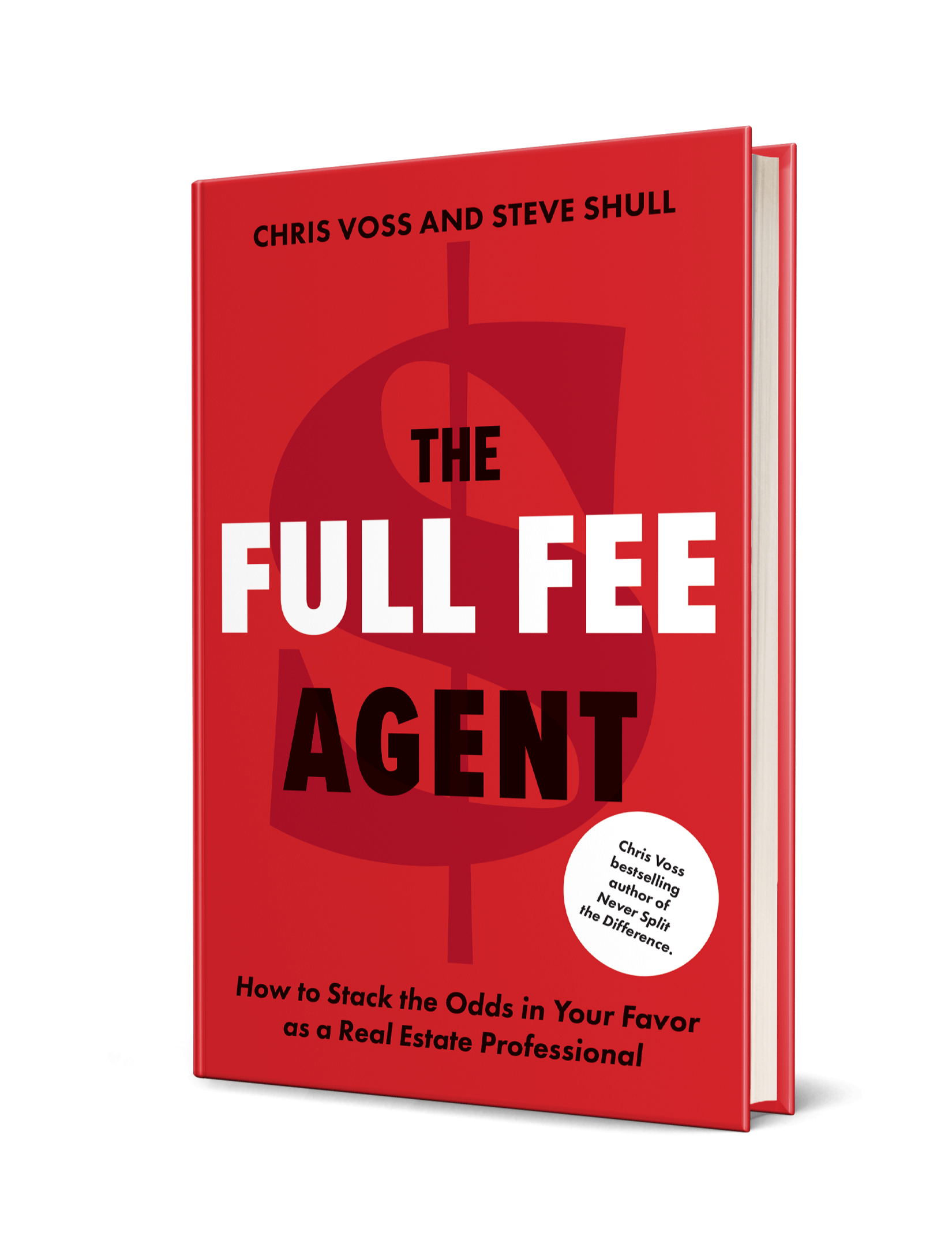How to Keep the Responsibility Where It Belongs? Use These 2 Tools.
Nov 01, 2024
by Laurie Gilmore
Last week, we went over the mindset shifts that will help you keep the responsibility where it belongs—striking that crucial balance of maintaining your client’s autonomy while performing the job of Trusted Advisor at the highest level.
This week, let’s look at how the tools of Tactical Empathy can support you in some crucial moments with both buyers and sellers when agents often fail to hold up their end of the bargain.
Along with thoughtfully placed Labels, Calibrated Questions and Focused Comparisons are a couple of powerhouse, go-to Tactical Empathy skills in terms of keeping the responsibility where it belongs.
Calibrated Questions are open-ended questions that are designed to make your counterpart think and to problem solve.
They are usually “what” and “how” questions, designed to respect your counterpart’s autonomy. You’re offering the other person the space to think for themselves.
“What feels like the best option here?”
“How would you like to proceed?”
These questions help to uncover challenges and set up how things are going to move forward.
If you ask “What feels like the best option to you?” the client will need to lay out a real option.
That tees you up perfectly to make sure you’re pointing out any risks associated with that option, using a Focused Comparison.
A Focused Comparison follows a format: “On the one hand this (something they’ve said or demonstrated), on the other hand this (something else they’ve said or demonstrated).
Followed by a Calibrated Question.
This structure focuses the other person on their own thoughts and priorities.
It shines a light on any place where their own statements or behaviors are self-contradictory.
It helps them to slow down and compare potential losses, and can often change how the person thinks about their decision.
Let’s imagine a couple of scenarios with buyers and how those skills can help your client maintain their autonomy while you perform your job as Trusted Advisor.
In the case of a request for repairs, let’s say you’ve gotten to the point of the conversation where you’ve asked, “What do you see as your best option here?”
If the buyer responds with, “I think we should ask them to make all of the repairs.”
You may want to follow up with a Label to point out a potential sticking point:
“It sounds like you’d be comfortable with the seller choosing the service provider and taking on responsibility for getting the work done.”
If, in fact, that sounds uncomfortable to the client, they may respond with:
“Actually, no. If it has to be repaired, I’d rather oversee that myself with my own contractor. Let’s ask for a credit.”
Now let’s imagine that buyer had previously told you how important it is for them to move in immediately after closing with no work to be done, because they’re hosting a huge family reunion the next month. You may employ a Focused Comparison:
“On the one hand it sounds like you don’t trust the owner to complete the repairs to your satisfaction.
On the other hand you’ve said that you absolutely cannot handle doing any work post-closing because of your event.
The question is: Which course of action leaves you feeling more stressed?”
When you ask a “how” Calibrated Question like, “How would you like to proceed?”, you’re initiating the process of how things are going to move forward.
The client’s response then presents a moment for you to make sure you’re pointing out what next steps may or may not take place from that point forward.
So, in the case of preparing an offer, if you pose that question and the buyer says:
“Let’s make the offer right at the asking price, and we’ll come up if we need to.”
Let’s imagine that this buyer has told you that they absolutely do not want to lose out on this property. They’ve shared with you their walk-away number which is well above the ask.
You may respond with a Label to point out a potential risk:
“It sounds like you’re feeling confident that you’ll have a chance to raise your offer later.”
In that conversation, you might choose to employ a Focused Comparison in the following way:
“On the one hand you’ve told me that you desperately do not want to lose the property.
On the other hand you do not want to pay any more than you absolutely have to pay.
Knowing that it’s possible that you will not be given a chance to raise your bid, later, what do you think is the best bidding strategy right now?”
This will make them stop and compare their fears of those 2 potential losses.
It may trigger a more in-depth conversation about where their fear of loss of the property intersects with their fear of loss of the money.
And let’s think about sellers. Pricing conversations are one of the areas where agents most often jump in and take on decision-making responsibility that should never have been theirs.
Pricing the home is not your responsibility, it is the responsibility of your seller.
Your responsibility is to lay out the landscape for them in terms of how the market, based on your experience, may respond to the price they have in mind.
BUT, what we see way too much of is agents fully abdicating the responsibility they do have.
You hear us say that pricing is not your responsibility and you swing way too far in the other direction.
You shrug and say, “Well, they chose the price”, without going deep into the clients hopes, dreams, fears and expectations and laying out the landscape in a way that makes it crystal clear to them what obstacles they may face given the choices they’d like to make—so they can make the best decision.
If there is any dissonance between what they want to achieve and what they’re saying they want to do, you have more work to do before you forge ahead and list at a price which is in conflict with your client’s goals.
You may employ a focused comparison:
“On the one hand, you’ve told me that your highest priority is to sell quickly, and that your greatest fear is getting stuck on the market.
On the other hand, you’re interested in a listing price that’s higher than all of your competition.
How do those two things go together?”
Often we find ourselves in a debate about pricing strategy.
Where the client is attached to an unrealistic number, they may be acknowledging that it’s too high, but they’re pushing for it in terms of it being the best strategy.
Don’t debate—grab a tool!
Again, a Focused Comparison:
“On the one hand, you want to make sure you are not going to leave any money on the table.
On the other hand, you want to make sure that your home sells.
What pricing strategy makes more sense to you: pricing the home so the buyer is looking at what they love about the home, or pricing it so the buyer is looking at what they don’t like?”
OR one of these Calibrated Question:
“You obviously want to sell your home for the most money possible. What do you think is the better pricing strategy: making the buyers reach for your price, or creating a bidding war where buyers are competing against each other for your home?”
OR
“You have a number in your head that makes sense to you. Anything else feels like a loss.
The question is: what’s the best way to get the result you want without jeopardizing the sale because you listed the home at a price that scared potential buyers away?”
Those last 3 examples are straight out of The Full Fee Agent, so there’s your reminder to reread that book.
Again, lean on your tools.
You guide. They decide.
Get free coaching in your inbox every week
Stay focused on what truly matters with key highlights and insights from all our coaching programs.


